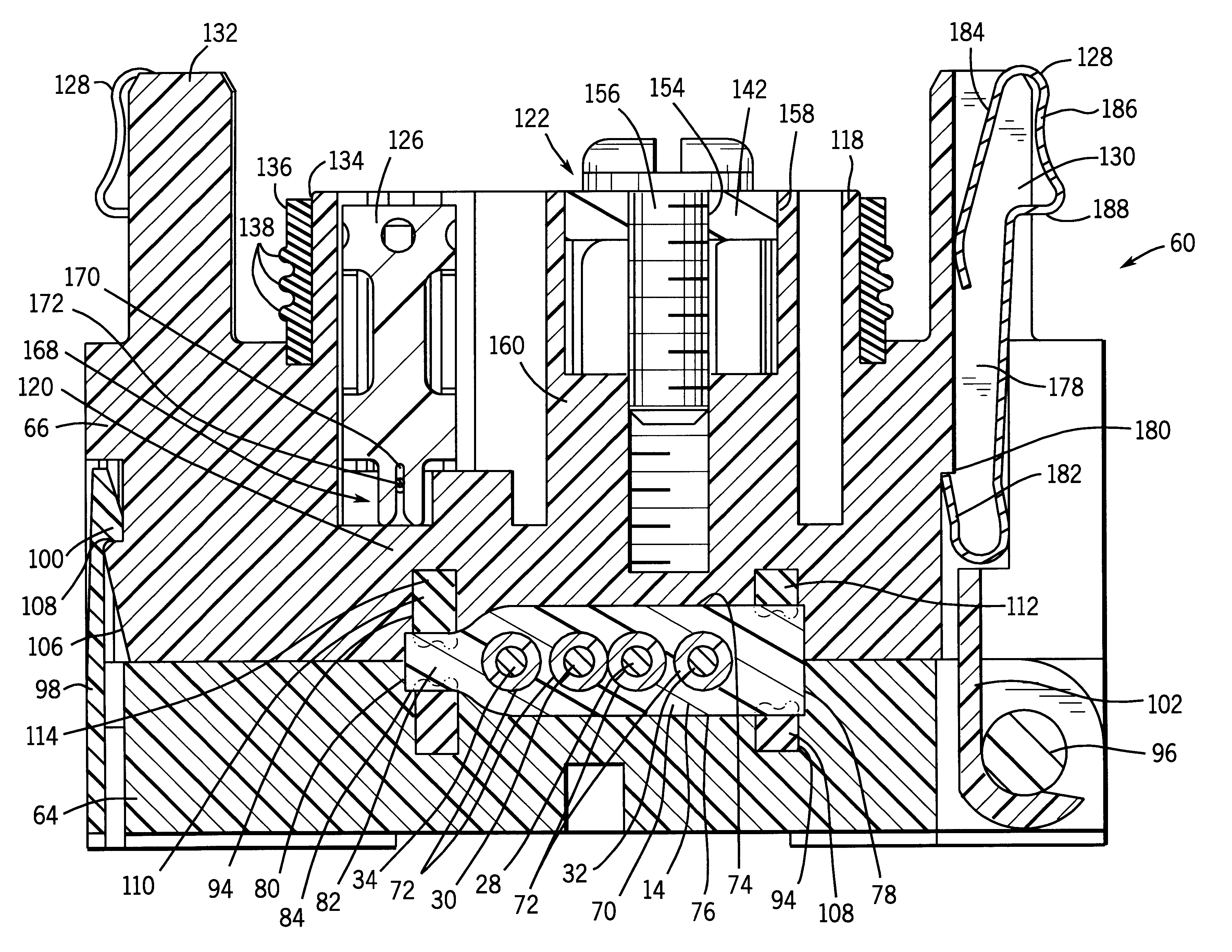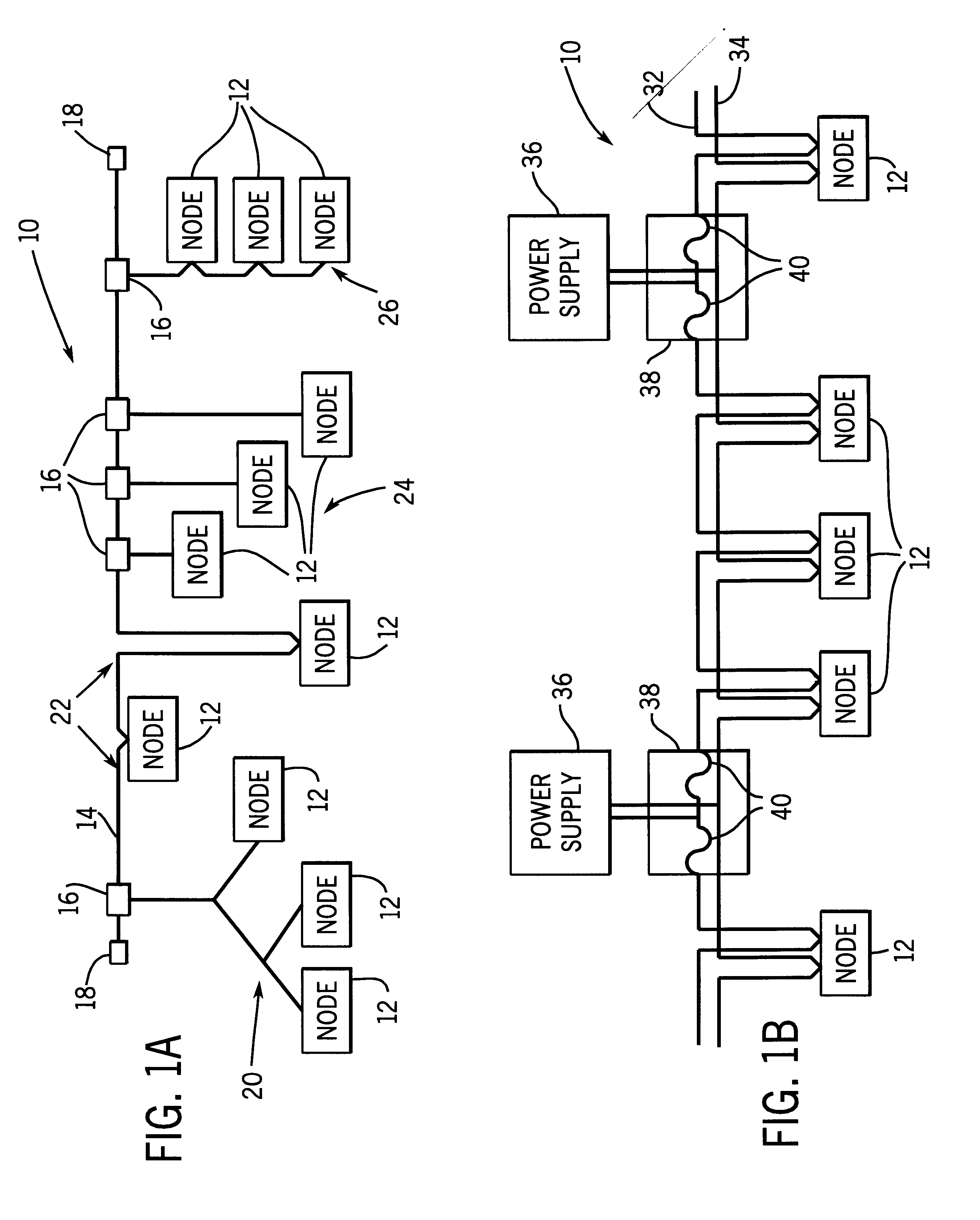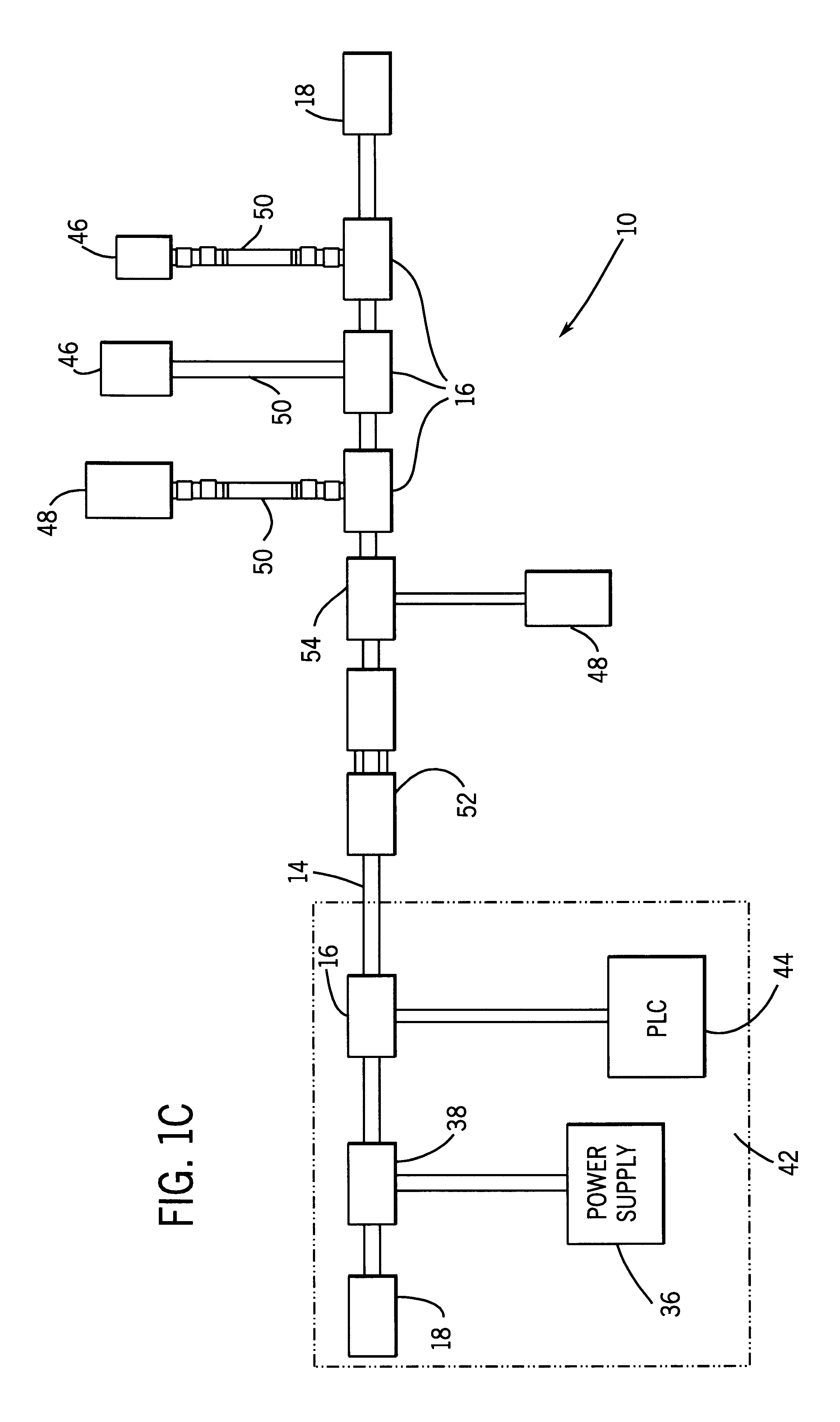Power and data network system media architecture
a network system and data network technology, applied in the field of network systems, can solve the problems of inconvenient installation of trunk cables at each device node, general unsuitability of cables for and inability to meet the needs of industrial power levels and distances
- Summary
- Abstract
- Description
- Claims
- Application Information
AI Technical Summary
Problems solved by technology
Method used
Image
Examples
Embodiment Construction
Turning now to the drawings, and referring first to FIG. 1, a data and power network is illustrated diagrammatically and designated generally by the reference numeral 10. The network includes a plurality of device nodes 12 coupled to one another via a trunk cable 14. Each device node receives power and data signals from cable 14 via a modular connector 16. At ends of cable 14 terminators 18 are provided for capping the cable ends and electrically terminating the signal conductors of the cable.
Each device node 12 will typically include a networked sensor or actuator unit, as will be appreciated by those skilled in the art. Depending upon the particular application in which network 10 is installed, nodes 12 may include such devices as push-button switches, proximity sensors, flow sensors, speed sensors, actuating solenoids, electrical relays, and so forth. The nodes 12 may be coupled to the network cable 14 in a variety of topologies, including "branch drop" structures 20, "zero drop"...
PUM
 Login to View More
Login to View More Abstract
Description
Claims
Application Information
 Login to View More
Login to View More - R&D
- Intellectual Property
- Life Sciences
- Materials
- Tech Scout
- Unparalleled Data Quality
- Higher Quality Content
- 60% Fewer Hallucinations
Browse by: Latest US Patents, China's latest patents, Technical Efficacy Thesaurus, Application Domain, Technology Topic, Popular Technical Reports.
© 2025 PatSnap. All rights reserved.Legal|Privacy policy|Modern Slavery Act Transparency Statement|Sitemap|About US| Contact US: help@patsnap.com



